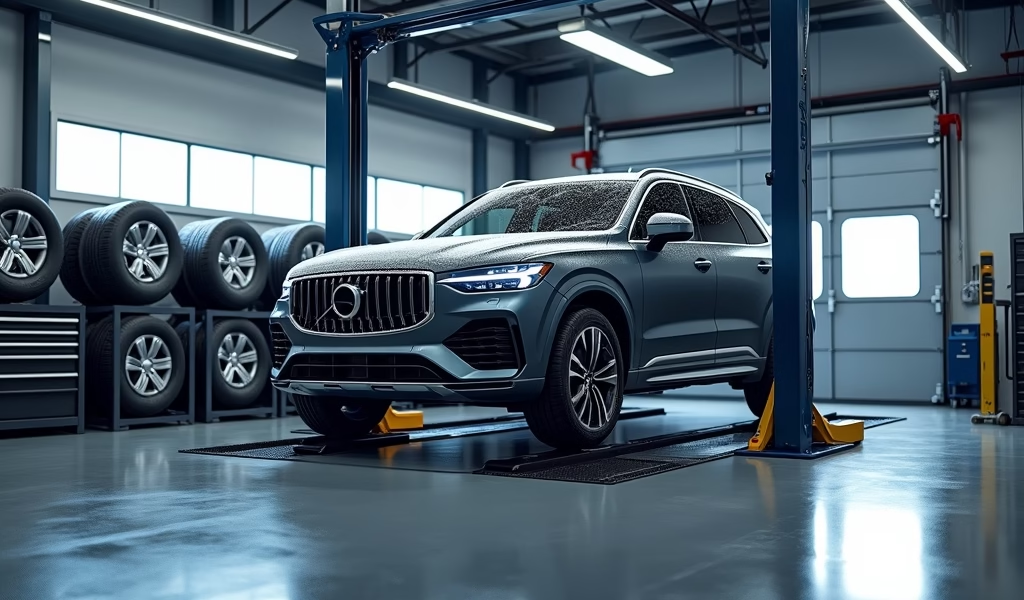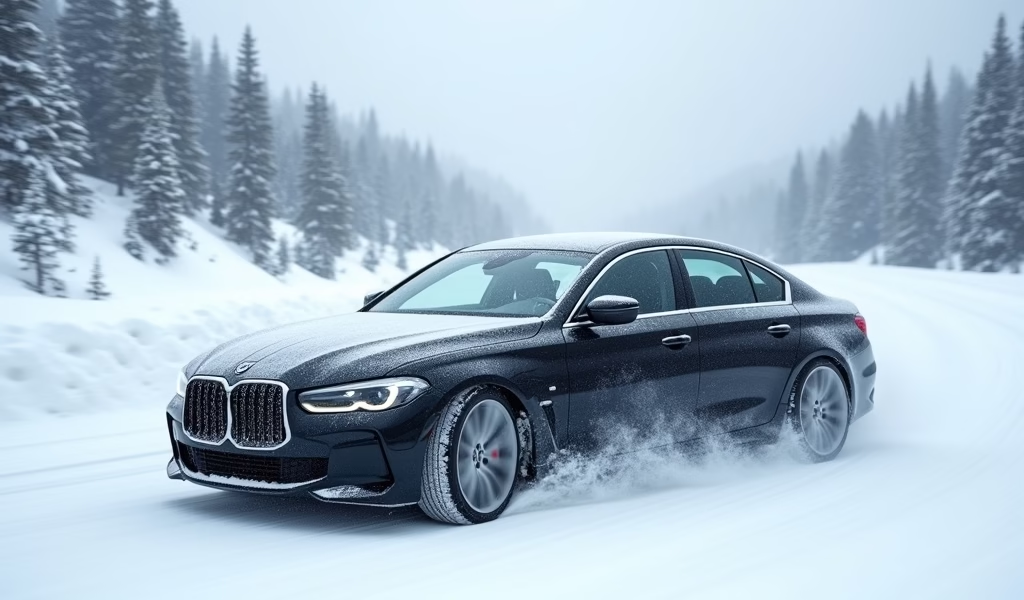Overview
This article examines five winter tire options for snowy conditions, recommending a complete set of winter tires as the safest choice for severe winters while presenting alternatives like all-weather tires for milder climates or snow chains for emergencies. The comprehensive guide emphasizes that winter tires provide superior grip and handling in cold temperatures below 45°F, potentially reducing braking distances by 30-40% compared to all-season tires, with costs ranging from $80-300+ per tire depending on quality.
Table of Contents
- Understanding Snow Tires: More Than Just Fancy Treads
- The Real Cost of Snow Tires: Breaking Down the Numbers
- Treatment Option #1: Complete Snow Tire Set – The Gold Standard
- Treatment Option #2: Partial Set – Why It’s Usually Not Worth It
- Treatment Option #3: Studded Snow Tires – Ice Crushing Champions
- Treatment Option #4: Snow Chains – Your Emergency Winter Backup
- Treatment Option #5: All-Weather Tires – The Year-Round Compromise
- Conclusion: Making the Smart Choice Before Winter Hits
- Frequently Asked Questions
Understanding Snow Tires: More Than Just Fancy Treads
Let’s talk about snow tires. Not just regular tires with attitude, but actual winter-ready rubber that’ll keep you from sliding into that ditch when the white stuff starts falling.
You know that feeling when your car starts to slip on a snowy road? Your heart jumps into your throat, and suddenly you’re gripping the wheel like it’s the last donut at the office. Yeah, that’s what snow tires are designed to prevent.
So what makes winter tires special? It’s all about three things:
- Rubber compounds that stay soft and grippy in freezing temperatures
- Deeper tread patterns that bite into snow and slush
- Thousands of tiny slits (called sipes) that create edges for gripping ice
All-season tires? They’re like wearing sneakers in winter. They’ll get you around on a clear day, but throw some ice in the mix and – oh boy – you might as well be wearing roller skates.
When should you consider investing in snow tires? Well, if temperatures regularly drop below 45°F in your area or you see more than occasional snow, they’re not just nice to have – they’re pretty darn essential. Even if you’ve got all-wheel drive! Wait, what? Yep, AWD helps you go, but it doesn’t magically help you stop. That’s where good winter tires come in.
The Real Cost of Snow Tires: Breaking Down the Numbers
Let’s get down to brass tacks – how much will this winter safety actually cost you? The price range for snow tires varies quite a bit:
- Budget options: $80-120 per tire
- Mid-range quality: $120-180 per tire
- Premium brands: $180-300+ per tire
Don’t forget to add installation costs – typically $15-25 per tire. And you’ll need somewhere to store your regular tires during winter months (unless you’re planning a tire bonfire, which I strongly advise against).
Is it worth it? Consider this: Consumer Reports testing shows that snow tires can reduce braking distances on ice by up to 30-40% compared to all-seasons. That could be the difference between a close call and calling your insurance company.
The real value isn’t just in the tire cost – it’s in accident avoidance, insurance deductibles saved, and not having to explain to your boss why you’re late because your car decided to make friends with a snowbank.

Treatment Option #1: Complete Snow Tire Set – The Gold Standard
This is exactly what it sounds like – replacing all four of your tires with proper winter tires. It’s the gold standard for winter driving, and for good reason.
For an average sedan with mid-range winter tires, here’s what you’re looking at:
- 4 tires: $480-720
- Installation/balancing: $60-100
- Potential wheel alignment: $80-120
- Total investment: $620-940
That might make your wallet wince, but hear me out. This option gives you maximum safety in winter conditions. Your car handles predictably because all four corners have the same grip level – super important when you’re making that emergency swerve to avoid the neighbor’s runaway trash can.
The downside? Besides the cost, you’ll need to swap tires seasonally and find storage space for your off-season set. But if you’ve ever experienced that stomach-dropping feeling of sliding toward a line of parked cars, you’ll know this investment brings peace of mind that’s worth every penny.
This option makes the most sense if you live where winter hangs around for months, have a longer commute, or just value not ending up in YouTube fail videos titled “Winter Driving Disasters.”
Treatment Option #2: Partial Set – Why It’s Usually Not Worth It
Some folks consider putting snow tires on just one axle – typically the drive axle. The math seems tempting:
- Only buying 2 tires instead of 4: Save $240-360
- Reduced installation costs: Save $30-50
- Total savings: $270-410
But hold up! This approach is like wearing one snow boot and one flip-flop. Sure, one foot stays warm, but your walking is a disaster waiting to happen.
Having significantly different grip levels between your front and rear axles creates dangerous handling imbalance. Your car can spin out unpredictably during emergency maneuvers – exactly what you don’t want when navigating that surprise ice patch!
According to tire experts at Tire Rack, this mixed setup can lead to dangerous oversteer or understeer situations. Translation: your car might not go where you point it when you really need it to.
The only scenario where this might be somewhat acceptable? If you drive a truck that rarely carries load in truly mild winter conditions with minimal ice. Even then, I’d still recommend the full set for optimal safety.
Treatment Option #3: Studded Snow Tires – Ice Crushing Champions
Picture your tires with tiny metal teeth. That’s essentially what studded winter tires are – winter tires with metal studs embedded in the tread for additional ice grip.
The cost breakdown includes:
- Premium over regular snow tires: $20-40 per tire
- Potential road damage fees in some regions
- Earlier replacement due to stud wear
On sheer ice, nothing beats studded tires. That clicking sound as you drive is the sound of tiny metal heroes ready to save your life on glare ice. However, they do come with some catches.
Many states restrict when you can use studded tires or prohibit them entirely due to road damage concerns. And while they’re amazing on ice, they don’t perform better than quality studless winter tires on regular snow or dry pavement. Plus, they’re louder – like driving with a tap dancer in each wheel well.
Studded tires make the most sense if you regularly drive on roads with compacted snow and ice, particularly in rural areas or mountainous regions where roads might not be cleared promptly. If your daily drive includes that “perpetually icy corner everyone knows about,” these might be your new best friends.

Treatment Option #4: Snow Chains – Your Emergency Winter Backup
Snow chains or cables are the winter equivalent of having a spare tire – not meant for regular use but invaluable when you really need them.
Let’s break down the costs:
- Quality chains/cables: $40-100 per pair
- Storage bag: $10-20
- Learning curve: Priceless (and potentially involves some colorful language)
Let’s be honest – putting on chains isn’t anyone’s idea of fun, especially when you’re on the side of a snowy road with freezing fingers. Modern “quick-fit” designs have improved the process, but it’s still a hassle. And you can’t drive fast with them – typically 30 mph max.
Chains shine in these scenarios:
- Occasional mountain trips
- Emergency situations
- Areas where chains are legally required during severe conditions
- Budget-conscious drivers in mild winter regions
Think of chains as your winter emergency kit, not your daily solution. They’re like keeping a fire extinguisher in your kitchen – hope you never need it, but you’ll be really glad you have it if you do.
Treatment Option #5: All-Weather Tires – The Year-Round Compromise
Not to be confused with all-season tires (which should really be called “three-season tires” in many climates), all-weather tires are a newer category that splits the difference.
Cost comparison:
- Typically 10-20% more expensive than regular all-seasons
- But 25-40% cheaper than maintaining separate winter and summer sets
- Average cost: $130-200 per tire
All-weather tires carry the mountain snowflake symbol (indicating they meet minimum winter performance requirements) while still functioning reasonably well year-round. Think of them as the Swiss Army knife of tires – not specialized for any one condition but handy in most.
They won’t match dedicated winter tires on ice and snow, nor will they handle like summer tires on dry roads. But for many drivers, they hit that sweet spot of “good enough” in all conditions.
All-weather tires make sense if:
- You experience occasional but not severe winter conditions
- Storage space for a second set of tires is an issue
- You want to avoid the hassle of seasonal changeovers
- Your winter driving is primarily on plowed and maintained roads
They’re perfect for those “winter-lite” regions where snow happens but doesn’t stick around partying for months.
Conclusion: Making the Smart Choice Before Winter Hits
Winter has a funny habit of arriving when you least expect it. One day you’re enjoying pumpkin spice everything, and the next you’re sliding toward a mailbox wondering why you procrastinated on those winter tires.
Let’s recap our five winter tire treatment options:
- Complete snow tire set: Maximum safety, highest cost, best for severe winters
- Partial set (front/rear only): Not recommended due to handling imbalance risks
- Studded snow tires: Exceptional on ice, regional restrictions, added costs
- Snow chains/cables: Great emergency option, not for regular use
- All-weather tires: Convenient year-round compromise for milder winters
Your best choice depends on three key factors:
- Your climate and typical winter conditions
- Your driving habits (frequency, distance, road types)
- Your budget constraints
If you regularly face snow and ice, a complete set of quality winter tires is genuinely your best option. The peace of mind alone is worth the investment—not to mention the potential savings from avoiding even a minor winter fender-bender.
For those in milder climates with occasional winter weather, all-weather tires or chains kept ready for emergencies might suffice.
Don’t wait until the first snowflake falls to think about this. Tire stocks often run low once winter weather hits, and you don’t want to be that person desperately calling every shop in town. Trust me, that’s not a fun Saturday activity.
Winter driving doesn’t have to be scary—with the right tires, it can actually be fun. Well, as fun as driving can be when it’s 10 degrees outside and your coffee freezes if you leave it in the cup holder too long!
Frequently Asked Questions
How long do snow tires typically last?
Most winter tires last about 4-6 winter seasons depending on your driving conditions and mileage. The softer rubber compounds wear faster than all-season tires, especially if used during warmer months.
Can I use winter tires year-round?
No, using winter tires in warm weather will cause them to wear out extremely quickly. They’re designed for cold temperatures below 45°F and will deteriorate rapidly in heat.
Are snow tires worth it if I only see occasional snow?
If you only see light, occasional snow that melts quickly, all-weather tires might be a better investment. For areas with just a few snow days annually, keeping chains in your trunk could be sufficient.
Do I really need winter tires if I have all-wheel drive?
Yes! All-wheel drive helps with acceleration but doesn’t improve braking or cornering on slippery surfaces. Winter tires improve all aspects of winter handling regardless of your drive system.
Can I just buy used winter tires to save money?
Used winter tires can be a good budget option if they have adequate tread depth (at least 6/32″) and no damage. Check the manufacture date (tires over 6 years old may have hardened rubber) and inspect for uneven wear.

